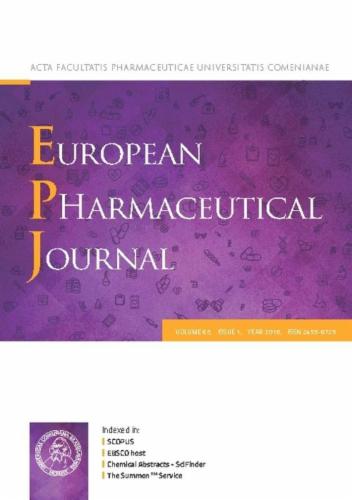Development of machine learning models for estimation of disintegration time on fast-disintegrating tablets
IF 4.7
3区 医学
Q1 PHARMACOLOGY & PHARMACY
引用次数: 0
Abstract
The disintegration time for solid dosage oral formulations is directly influenced by diverse factors such as molecular properties, physical characteristics, excipient compositions, and formulation-specific attributes. This research addresses the challenge of predicting this parameter by applying advanced machine learning techniques to model disintegration behavior, with improved reliability achieved through Z-score normalization and outlier removal during data preprocessing. The data was used for the fast-disintegrating tablets (FDT) to assess the effects of underlying parameters on the tablet disintegration time. The selected models—Multi-Task Lasso (MTL), Elastic Net (EN), and a stacking ensemble—were chosen to balance feature selection, multicollinearity handling, and predictive performance. The stacking ensemble, which combines the outputs of MTL and EN through a meta-regressor, effectively leverages their complementary strengths, resulting in superior accuracy and robustness. Hyperparameter tuning was performed using the Firefly Optimization Algorithm (FFA), a bio-inspired optimization technique known for its efficiency in navigating high-dimensional search spaces. This ensured optimal model performance and reduced the risk of overfitting, leading to a solution capable of generalizing across various data subsets. Key findings include the identification of the top 10 most influential features, with wetting time emerging as a primary determinant of disintegration behavior. This study reports a new framework that combines machine learning models with advanced optimization techniques for accurate disintegration time prediction of pharmaceutical tablets. Besides increasing the predictive value of the model, the framework also provides valuable understanding of the most influential factors that influence disintegration.

快速崩解片剂崩解时间估计机器学习模型的发展。
固体剂量口服制剂的崩解时间直接受到多种因素的影响,如分子性质、物理特性、赋形剂组成、制剂特性等。本研究通过应用先进的机器学习技术来模拟解体行为,解决了预测该参数的挑战,并通过数据预处理过程中的z得分归一化和异常值去除来提高可靠性。以快速崩解片(FDT)为研究对象,考察各基本参数对崩解时间的影响。所选择的模型-多任务套索(MTL),弹性网(EN)和堆叠集成-被选择来平衡特征选择,多重共线性处理和预测性能。堆叠集成通过元回归器将MTL和EN的输出结合起来,有效地利用了它们的互补优势,从而获得了更高的精度和鲁棒性。超参数调优使用萤火虫优化算法(FFA)进行,FFA是一种以高维搜索空间导航效率高而闻名的生物优化技术。这确保了最佳的模型性能,并降低了过度拟合的风险,从而产生了能够跨各种数据子集进行泛化的解决方案。主要发现包括确定十大最具影响力的特征,湿润时间成为解体行为的主要决定因素。本研究报告了一个将机器学习模型与先进的优化技术相结合的新框架,用于准确预测药物片剂的崩解时间。除了提高模型的预测价值外,该框架还提供了对影响解体的最重要因素的有价值的理解。
本文章由计算机程序翻译,如有差异,请以英文原文为准。
求助全文
约1分钟内获得全文
求助全文
来源期刊
CiteScore
9.60
自引率
2.20%
发文量
248
审稿时长
50 days
期刊介绍:
The journal publishes research articles, review articles and scientific commentaries on all aspects of the pharmaceutical sciences with emphasis on conceptual novelty and scientific quality. The Editors welcome articles in this multidisciplinary field, with a focus on topics relevant for drug discovery and development.
More specifically, the Journal publishes reports on medicinal chemistry, pharmacology, drug absorption and metabolism, pharmacokinetics and pharmacodynamics, pharmaceutical and biomedical analysis, drug delivery (including gene delivery), drug targeting, pharmaceutical technology, pharmaceutical biotechnology and clinical drug evaluation. The journal will typically not give priority to manuscripts focusing primarily on organic synthesis, natural products, adaptation of analytical approaches, or discussions pertaining to drug policy making.
Scientific commentaries and review articles are generally by invitation only or by consent of the Editors. Proceedings of scientific meetings may be published as special issues or supplements to the Journal.

 求助内容:
求助内容: 应助结果提醒方式:
应助结果提醒方式:


